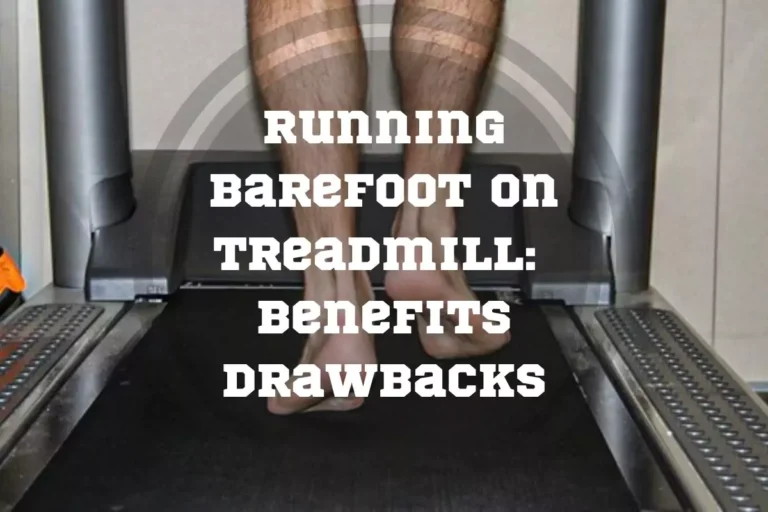How To Run A Faster Mile
Beginner runners are often looking for ways to challenge themselves. A common goal is to improve how long it takes you to run a mile. If you want to get a better mile time, you may be wondering how to run a faster mile. Let’s take a look at how you can shave time off of your mile speed.
Practice is the best way to run a faster mile. Along with your running training, it’s also important to include strength training. By doing this, you could improve your stamina and keep a faster pace. Make sure you’re taking shorter strides during your run so you don’t get tired out quickly.

How Long Does It Take To Run A Mile?
Every beginner will start off with a different time. On average, beginners take approximately 12 to 15 minutes. Once a runner is more experienced, it’s natural for their time to improve. The average runner who trains frequently could run a mile in 9 to 12 minutes.
If your time is slower than this, that’s perfectly okay. Always remember that there are different factors that determine each individual’s time to run a mile. To begin with, your genetics will play a role in your speed. This is why 2 people with similar fitness levels can receive the same level of training, but one will run faster than the other. Let’s take a look at some other factors that determine how long it could take someone to run a mile.
Age
One of the first things you should consider is your age. Young runners (18 to 30 years old) typically run faster. Now, don’t let that discourage you if you’re over 30. People can improve their running speed at any age. But it is important to remember that age affects your pace so set realistic goals.
Fitness Level
How often do you exercise? People that exercise on a daily basis will have an easier time improving their speed than people who only exercise sporadically. If your workout schedule is irregular, you should aim to exercise daily to improve your running speed.
Muscle vs Fat
Your weight affects how fast you run as well. People with higher body fat are typically slower. Runners that have spent time focusing on strength training generally run faster because they have built up more muscle.
Running Conditions
It’s not only your fitness levels that affect how fast you’re running. Where you choose to run also determines how fast you can go. If you run outdoors, the weather will affect your pace. Going up against heavy winds can slow you down. Many runners also get tired out sooner if they are running in a location with hot and humid weather.
A lot of runners didn’t realize that altitude affects their speed as well. When you run at a higher altitude, the air pressure is lower. This can cause a decrease in oxygen in your blood.

Is It Possible To Reduce The Time Per Mile?
Is your running speed slower than the range mentioned above? You might be wondering if it’s possible to get a better running time. It is 100% possible for runners to reduce their time per mile. But it doesn’t happen overnight.
Are you wondering how to decrease mile time? If you want to reduce your time per mile, it’s important to follow a steady training plan. While improving your speed may be your main goal, you should be focused on reducing your chance of injury.
For this reason, don’t push yourself too hard at the beginning. Your speed will increase gradually with regular training. If you’re just starting out, it’s important to let your body adapt to the routine before challenging yourself to run faster.
As you adapt to your training, you can start to work on improving your pace. Most beginners should aim to improve their mileage by 10% weekly. So, if you follow a steady training routine, how long will it take to see results? It’s important to remember that every individual will have different results. On average, it takes approximately 16 weeks for runners to notice an improvement.
Why Is It Important To Run A Mile Faster?
Many runners question if they should focus on running longer or faster. Of course, this is a personal preference. One of the main benefits of running faster is improving your leg speed. However, there are many other ways you can benefit from improving mile time. Let’s take a look at why this is important.
Improve Your Stride
Your stride is the distance covered between 2 steps. This can affect how fast you run. One of the benefits of training to run faster is that you can improve your stride. When runners train to run faster, they can also strengthen their stride. With a stronger stride, there’s more ease with each step taken.
Keep Your Muscles Strong
Slow-twitch muscle fibers are put to work when you run fast. These fibers slowly decrease with age after a person turns 25. But, runners that exercise regularly are able to slow down the muscle fiber loss.
Lower body muscles can benefit from fast running. Fast running is especially a great way to keep your gluteal muscles in great shape. These muscles get put to work as your body propels forward.
Burn More Calories
Running is an excellent way to burn calories. The faster your pace is, the more calories you will burn. When you run faster, your heart rate will increase. This causes your body to use more energy. When your body uses more energy, it will burn more calories.
So, how many calories could you burn by running faster? According to Harvard Medical School, the average runner could burn between 240 to 336 calories in 30 minutes of running if they can run a mile in 12 minutes. However, runners that do the same distance in 6 minutes could burn between 453 to 671 calories if they run for 30 minutes. The exact amount of calories you burn will depend on your weight.
Improve Stability & Agility
Did you know that fast running can improve your performance with other sports? When runners train to run faster, they include more dynamic moves in their routine. This can help improve their balance and stability. It’s important to improve your balance so you don’t fall over when you take a step.
Another thing people didn’t realize about fast running is that it can also improve your agility. This is because when you train for faster running, you’re performing a lot of quick footwork. You may notice that this helps you respond quickly to challenges that you may come across while running.
Running Economy
If you’re a beginner, you may not be familiar with the running economy. This is the measurement of how much oxygen your body uses at a specific speed. As a runner continues to train, they will improve their running economy.
Basically, what this means is that your body will require less oxygen as you run. This will leave you with spare oxygen, which can help you maintain a pace.
Reduce Your Risk Of Injury
Training for faster running could reduce your risk of injury if you train the correct way. This is because fast running is an efficient way to train your muscles. Running does put a lot of impact on your body. When your muscles are more resilient, you’re less likely to experience an injury from running and other exercises.

Tips To Run A Mile Faster
Are you wondering the best way to run a mile faster? It will all come down to how you practice. Always be patient and set realistic goals when it comes to improving your time. You can also follow the tips for running a faster mile below.
What Are Your Goals?
Before you start trying to run faster, you should have a set goal in mind. Once you have established your goal, you can start making a realistic plan to meet that goal. For example, if you’re currently running a mile in 13 minutes, you might have a goal to improve that to 8 minutes. Knowing what you want is key to planning how to get there.
Distance Running vs Sprinting
You might be wondering what type of running you should be practicing to improve your mile speed. Should you be going on long runs or short sprints? If you want the best results, you should incorporate both into your training.
If you’re wondering how to run a mile faster without getting tired, you should practice distance running. Distance running is an efficient way to improve your stamina and gradually increase your speed. For this reason, you should include at least one long-distance run each week in your training plan.
Sprinting is a great way to prepare your body to run fast. When sprinting, you can improve your speed by doing intervals. For example, you can run at high speed for 30 seconds, then jog lightly for 60 seconds and repeat. This is a great way to get your body used to fast running.
Once you have gotten used to your running routine, you should incorporate some challenges. For example, running at an incline is a great way to increase your running power.
When it comes to all the different types of running, there is one rule of thumb every beginner should follow. Always pace yourself. You could put yourself at a higher risk of injury if you take on too much too soon.
Include Intervals
Interval training is one of the best ways to prepare your body to run faster for longer. If you train 5 days per week, you should include 20-minutes of interval training 3 times a week. This is when you do combination running. For example, 30 seconds of running followed by 60 seconds of jogging. This can be done multiple times in a row.
With intervals, it’s important to gradually increase your time. You may start off with 30-second/60-second intervals. But, once you get comfortable with this interval, you can increase to 60-second/60-second intervals, then 60-second/120-second. You can continue to adjust the time to challenge yourself.
Never Skip The Warm Up and Cool Down
Warm-ups and cool-downs are essential for every type of exercise, not just running. Any time you work out, you need to warm up to prepare your muscles and reduce the risk of injury. A cool-down is also important because it steadies your heart rate and blood flow. If you skip the cool down, you may feel dizzy and put yourself at risk of fainting.
Warm-ups and cool-downs are very easy. This involves 10 to 15 minutes of moderate physical activity and stretching. Runners that stretch regularly can improve their range of motion. The ideal warm-up for runners is 10 to 15 minutes of easy running and joint warm-ups. When it comes to your cool-down, all you need to do is 10 minutes of easy running and stretching.

Why Your Form Is Important
If you’re wondering how to run a mile faster safely, then you need to know how important your form is. Poor form is one of the top reasons why runners struggle to reduce their mile time.
So, how can you tell if your form is correct while running? Here are some expert tips on maintaining a proper form.
- Always keep your back straight. Avoid slouching.
- Keep your shoulders back. While they should be held straight, it’s important to make sure they’re loose. Make sure you can still gently stretch them if needed.
- Hold your head high and look at what’s straight ahead of you. Avoid tilting your head at an angle.
- Resist the temptation to look at your feet while running.
- Avoid moving your arms across your body. Instead, you should move them forward and backward at a 90-degree angle.
Proper Breathing
It’s very important to breathe naturally while running. A rule of thumb is that if you’re running at a pace where you can’t have a conversation, you’re going too fast. Irregular breathing can also prevent you from running at a faster pace.
So, how can you make sure you’re breathing properly while running? It’s recommended to practice rhythmic breathing patterns. This breathing pattern can be aligned with your steps as your run. You should practice breathing in for 3 seconds and breathing out for 2 seconds. Once you get used to this pattern, you can match it to your stride.
Strength & Core Training
You won’t be able to improve your running time if you aren’t strong enough. Your muscles play an important part in your speed and stamina. After all, if your body isn’t strong enough to carry its weight, you won’t be able to pick up speed as easily.
Every runner needs to include strength training in their exercise schedule. You can make a huge improvement to your running performance if you include 2 to 3 strength training workouts into your schedule every week. This can include activities like lifting weights, squats, lunges, back extensions, and more.
Core training is also important to reduce your risk of injuries. This will help with your balance and stability. Good core workouts for runners include planks, back extensions, and hip-bridge exercises.
All runners should focus on foot exercises to improve their stability and performance. This will prepare the feet for the demand of the run.
Keep A Running Diary
If you’re committed to reaching your goal, you should keep a running diary. This is how you can keep track of your process and see where you need improvement.
You don’t have to buy a specific book or app to keep a running diary. You can use a notebook, journal, or even keep a chart on your computer or smartphone.
Stay Hydrated
All runners need to stay hydrated. Hydration is key to keeping your body functioning well. When you’re running, you will sweat a lot. Water (or other hydrating beverage) can help your body replenish lost fluids.
Bring A Friend
One of the biggest challenges a person faces with how to improve mile time is staying motivated. That’s why you should have a partner. Of course, running is something you can train for solo. However, running with a friend who has similar goals is a great way for both of you to stay on track with your training.
Motivation isn’t the only reason why running with a friend is a great way to improve your time. When you have a running partner, you can keep an eye on each other’s form to avoid injury.
Training Plan To Improve Your Mile Time
If you’re serious about improving your mile time, you need a training plan. Your personal training plan should include the following:
- 2 to 3 days of strength training.
- 1 day with long-distance running.
- 2 to 3 days of speed workouts or sprinting.
- 1 to 2 rest days.
Create your training plan with your current fitness levels in mind and the intent to improve your speed by nearly 10% weekly. When making your plan, it is okay to schedule strength training and running workouts on the same day. But, it’s important not to push yourself too hard because you don’t want to risk injury and exhaustion.
An example of a weekly training plan to improve mile speed for beginners
| Days of week | What to do |
|---|---|
| 2 days | strength training |
| 1 day | long-distance running |
| 2 days | speed workouts or sprinting |
| 2 days | rest days |
Having 1 to 2 rest days per week is essential to helping your muscles recover. The load from running can cause muscle fibers to tear. If you don’t allow at least 1 day per week for recovery, you put yourself at a higher risk of injury.
FAQ
How can I mentally run a mile faster?
The best way to mentally prepare is to have realistic goals set, a plan to achieve your goals and track your progress along the way. Tracking your progress can keep you motivated as you see how you’re improving.
How do I train for my mile speed run?
Include interval training into your routine to prepare for a mile-speed run. This is where you practice running at high intensity for 1 minute, then switch to walking or jogging for 1 minute and repeat. (You can adjust the interval times based on your routine.)
How can I run a fast mile without training?
It’s not recommended to run a fast mile without training. If you aren’t prepared, you risk injury. Even practicing for 20 to 30 minutes a day with 2 rest days can help you prepare to run faster.
Conclusion
Steady practice is key to improving your mile speed. Your training plan should include a combination of sprinting, distance running, and strength training for optimal results. Your pace should improve gradually, with most runners seeing improvement in roughly 16 weeks.
How are you planning to train to improve your mile speed? Let us know in the comments below.
Also read:
- Benefits of Running in the Morning
- Why Do My Ribs Hurt After Running
- Sub 2 Hour Half Marathon
- Do I Need to Fuel During a Half Marathon
- Running 5 Miles a Day
- How Many Miles Should I Run a Day
- Average Running Speed
- Running 3 Miles Every Day
- What to Wear Running in 40 Degree Weather
References:
- The effect of atmospheric pressure on oxygen saturation and dyspnea: the Tromsø study // PubMed: https://pubmed.ncbi.nlm.nih.gov/32125519/
- How to Become a Faster Runner // Cleveland Clinic: https://health.clevelandclinic.org/how-to-become-a-faster-runner/
- Calories burned in 30 minutes for people of three different weights // Harvard Medical School: https://www.health.harvard.edu/diet-and-weight-loss/calories-burned-in-30-minutes-for-people-of-three-different-weights
If you have any questions or suggestions, you can contact us via email – [email protected]






